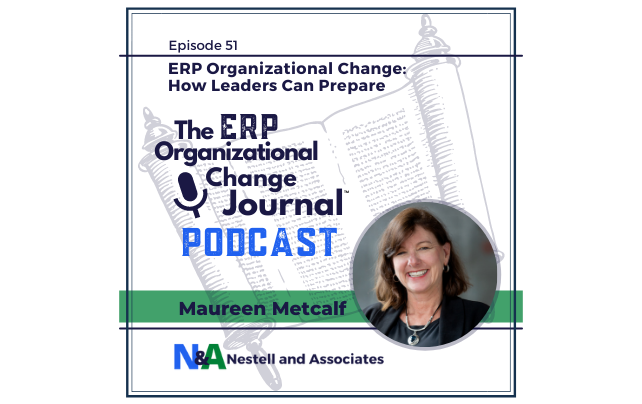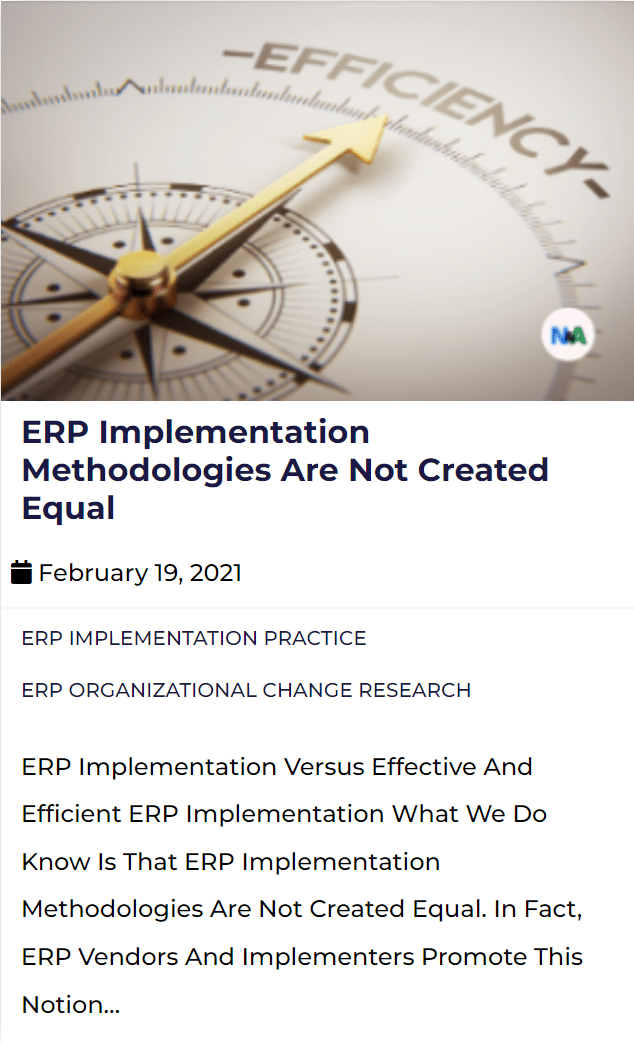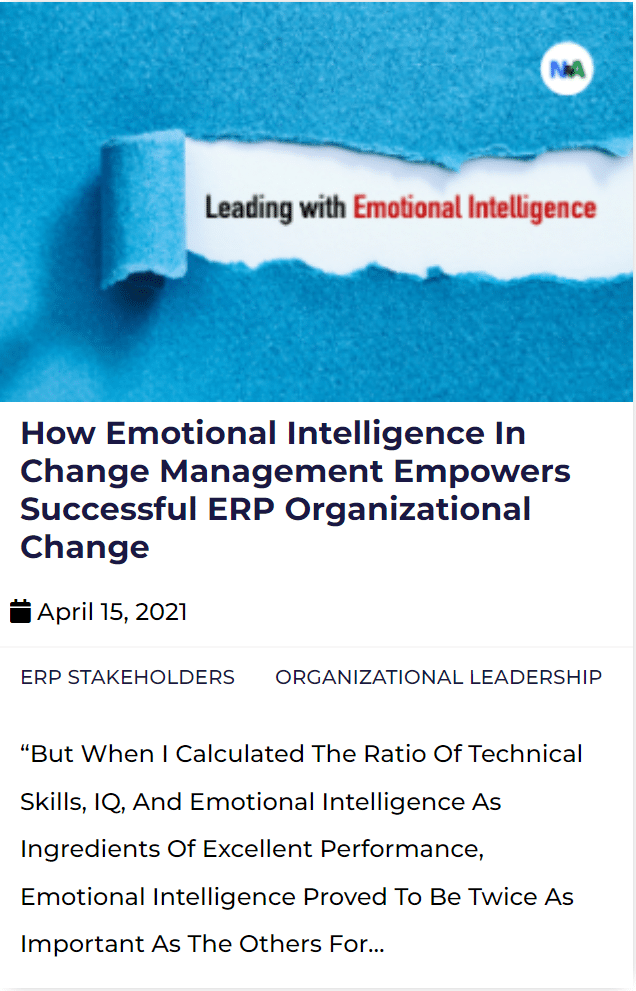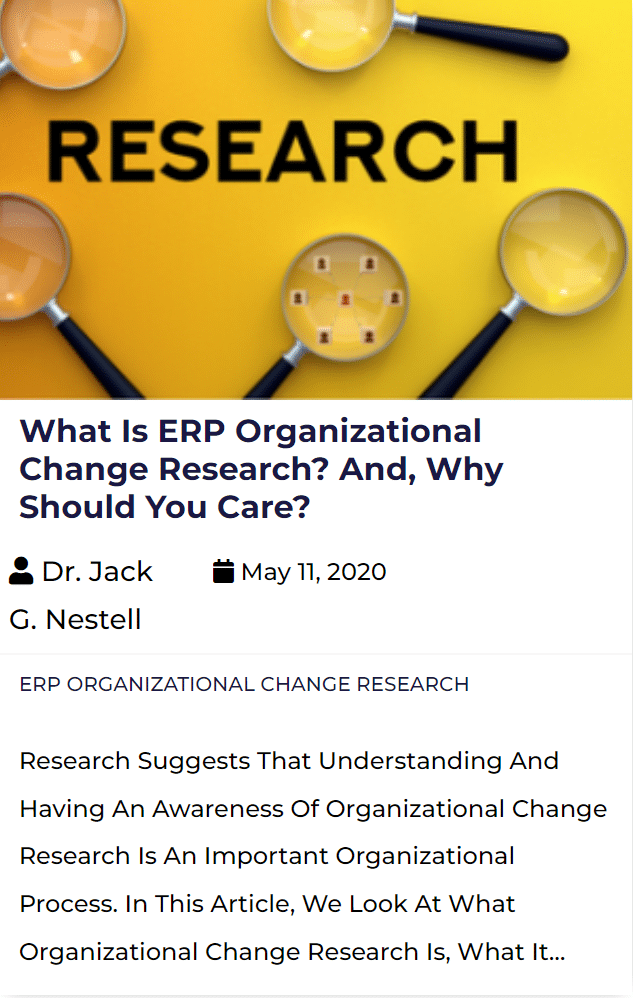Preparing For The Post-Go-Live ERP Productivity Dip
The post-go-live ERP productivity dip deserves attention and proactive contemplation. ERP implementation and organizational change success do not end, and are not determined, just when you “hit the switch”. In fact, the “go-live” is really just the beginning of opportunities for continuous organizational ERP improvements and of the realization of ERP benefits and return on investment. The value of formal and informal learning and training doesn’t stop after you “hit the switch”. During the pre-go-live phase, preparation and readiness training needs to consist of effective organizational stakeholder learning. This learning should be executed with a scaffolding approach such that the learning process is effective. Additionally, learning should address conceptual as well as functional ERP learning. Effective training should include user acceptance testing, conference room piloting, and formal sign-off among other best practices founded in principle. Additionally, the learning must consist of awareness and effective communication of the ERP truism, there will be a post-go-live ERP productivity dip.
Honesty, Planning, and Effective Learning are Significant ERP Productivity Dip Influences
Assuming an effective and efficient pre-go-live training program, that’s really just the start. It is one thing to learn in a pre-go-live environment. However, it is another thing to learn on the job in a “real world” environment after the go-live. To a large degree, the transition past the post-go-live productivity dip is a function of human learning and the application of effective ERP organizational change learning programs. We are going to discuss the post-go-live productivity dip further in upcoming posts and articles, but there are multiple reasons for this dip. The key is not to just try to mitigate the productivity dip as much as possible via the most effective and efficient pre-go-live training. Mitigating the productivity dip includes just acknowledging and being honest about it. Furthermore, being prepared with tangible and effective post-go-live tactical actions helps ensure the transition past this ERP productivity dip.
Key ERP Productivity Dip Success Concepts
Application of Learning From Pre-Go-Live Training
One major and primary key to post-go-live transition success comes with; 1) a continuous learning program, 2) effective and efficient transfer of knowledge to the workplace, and 3) and proper measurement, adjustment, and support for the application of the knowledge that was gained in pre-go-live training.
(Kirkpatrick & Kirkpatrick, “Four Levels of Training Evaluation”, page 15)
“Four Levels of Training Evaluation” (Kirkpatrick and Kirkpatrick, p. 35) discusses how “Reinforcement that occurs after the learning event produces the highest level of learning effectiveness, followed by activities that occur before the learning event, yet each typically garners only 5 percent of the training time and budget”. Essentially what Kirkpatrick and Kirkpatrick are stating is that there is great value in transfer and application from the training room to operations. And, this is certainly no less true in the context of ERP organizational change. Kirkpatrick and Kirkpatrick also note that, provided and assumed you have an effective and efficient pre-training program, “…when desired program outcomes are not achieved, the cause is usually found on the job, not in lack of knowledge or skill. It is seldom necessary to send employees back to the classroom.”, again, assuming proper, effective, and efficient training. Kirkpatrick and Kirkpatrick are simply stating the value of transfer and application of training to the “real world” environment. Furthermore, that lack of application can often be a significant gap in effective learning and hence desired business results.
ERP Productivity Dip Tactical Action
Therefore, your ERP organizational change plan would benefit from the points of Kirkpatrick and Kirkpatrick in that pre-go-live classroom training and evaluation is just a part of success. The successful application is also critical. And the successful application needs to be wholly advocated and endorsed by the organization.
Kirkpatrick and Kirkpatrick are basically telling us ERP Organizational change practitioners that effective training as well as training expectations, evaluations, and the application doesn’t end after the classroom user acceptance testing and conference room pilots. So then, the ERP organizational change plan must have concrete, specific, organizationally aligned action items in order to ensure that training and its application are effective. This will help organizations accelerate past the known, factual, expected, and accepted (to a certain degree) post-go-live ERP productivity dip.
Understanding That Success & Realized Benefits Aren’t Always Immediate
In “Firm Performance Effects in Relation to the Implementation and Use of Enterprise Resource Planning Systems”, Nicolaou (2011) states that ERP implementation represents a significant commitment that impacts nearly all business processes. Nicolaou also states that given the sheer nature of ERP, benefits aren’t and can’t all be realized within a short time frame. ERP ROI and expected benefits can be a longer-term realization that extends well beyond the go-live. Nicolaou further adds that the “return on assets and return on investment were negatively affected by ERP adoption in the year of and following system completion”. In other words, success and realized benefits aren’t always immediate and fully realized just because an organization “hit the switch”.
Moreover, in “Effect of enterprise resource planning implementation on organizational productivity.” Newlin (2009) states a great and true point, “ERPs evolve as they make their way through a life cycle, usually starting with conception and ending with a new way of doing business”. Newlin also describes the post-go-live productivity dip as:
“Next is stabilization where processes are cleaned up and organizations attempt to adjust to the new environment. Continuous improvement follows and is defined by adding bolt-ons, which are specialized applications that augment the ERP system and engaging in process redesign to implement new structures and roles to leverage the system. Finally, the organization enters transformation, where the use of the new system is part of everyday operations. There is no longer management emphasis on using the system, it is simply used. Organizational personnel has accepted the system and processes have been modified to match the information system if necessary.”
Lastly, in their work “ERP post-implementation: Risk assessment”, Sobyanina and Mockutė make a great point/suggestion:
“In the end, it should be mentioned that the awareness of potential risk factors and their dependence on each other can facilitate managing process and help to avoid possible negative effects for a company’s business. Sometimes manager’s confidence that technology could solve any problem, might discourage employees from presenting a realistic view, which, in turn, may prevent from addressing post-implementation issues more effectively……The findings suggest that companies should invest and pay more attention not only in technological solutions but in organizational or human resource areas, e.g. every company should have a proper human resource strategy that implies not only monetary rewards but non-material values as well, such as training, seminars or participation in projects”.
Well said indeed.
The Moral Of The Story To Post Go-Live Productivity
The moral of the story to the post-go-live conversation is: be honest and realistic within the organization that the effort and training (and its application) doesn’t end after go-live. The ERP benefits happen, but they depend on the holistic approach to the effort. In “Minimizing the human capital aspect of productivity disruption during the implementation of an enterprise resource planning (ERP) system”, Newlin (2009) states that “In order to minimize the productivity dip, it is necessary to have a realistic expectation regarding depth and duration of the dip, and understand the factors that contribute to the dip including how to manage them”. And then, build concrete action items into your ERP organizational change plan in which to address these factors.
At Nestell & Associates, we understand how important organizational change management is.
Our consulting for organizational change begins with a change readiness assessment, where we conduct a full analysis of your company structure and develop a customized plan that meets the specific needs of your business. With nearly 30 years of experience in private equity M&A, our team understands the tools required for a successful organizational change. Contact us to learn how our suite of ERP solutions can resolve your current challenges.
Authored By
Dr. Jack G. Nestell
Related Podcast Episode
Episode 51
ERP Organizational Change: How Leaders Can Prepare
by Nestell & Associates | Jan 5, 2022





